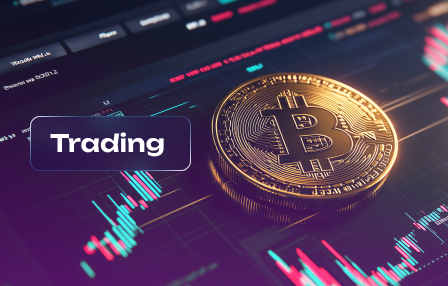P2P vs. OTC – Which Is the Best Option for You?
March 11, 2025
Choosing between these trading methods hinges on a thorough comparison of their characteristics and costs. The preference for one over the other often comes down to individual risk tolerance and investment goals. For those seeking to minimize overhead expenses, peer-to-peer platforms can provide an attractive avenue, while over-the-counter deals typically cater to larger transactions with greater privacy.
Evaluating security measures is paramount in both contexts. P2P exchanges can expose participants to greater risks due to the lack of intermediary oversight, making it essential to conduct due diligence on counterparties. Conversely, OTC trades generally involve brokers who facilitate secure transactions, yet they may come with hidden fees that can affect overall profitability.
When assessing which option aligns with your strategy, consider the volume and frequency of your trades. Higher transaction volumes may benefit from the liquidity offered by OTC markets, while smaller investors might find more favorable pricing through decentralized platforms. Ultimately, understanding the nuances of each method will empower you to make informed decisions tailored to your specific needs.
Understanding P2P Trading Mechanics
Choose a platform that prioritizes security, as this directly impacts your transactions. Ensuring robust escrow services minimizes risks associated with counterparty defaults. Utilize platforms that provide user ratings and feedback; this aids in evaluating trustworthiness.
Costs can vary significantly between different services. Typically, peer-to-peer exchanges charge lower fees compared to traditional markets. Analyze the fee structure before committing to any transaction to ensure it aligns with your budgetary constraints.
Assess the trade-off between privacy and transparency. While decentralized platforms offer anonymity, they may expose you to higher volatility and risks. Conversely, brokerage services provide more stability but may require personal information.
Your decision must weigh security, cost implications, and risk exposure. Always conduct thorough research before engaging in any transaction model. Evaluate each option based on how well it fits your trading strategy and personal risk tolerance.
Key Features of OTC Trading
Consider leveraging over-the-counter transactions for large-scale trades. This method offers several distinct advantages:
- Privacy: Transactions occur directly between parties, ensuring confidentiality that is often lacking in traditional exchanges.
- Reduced Slippage: Large orders can be executed without significantly affecting market prices, minimizing the impact on liquidity.
- Customized Solutions: Tailored agreements between buyers and sellers can address specific needs, including settlement terms and pricing structures.
- Access to Liquidity: Allows engagement with institutional traders, enhancing opportunities for substantial volume execution.
However, be mindful of the associated risks:
- Counterparty Risk: Direct transactions expose participants to the risk of default by the other party.
- Regulatory Challenges: Different jurisdictions may have varying regulations that can impact security and compliance.
- Cost Considerations: Fees may vary significantly compared to centralized platforms, depending on the broker or service provider.
In summary, while this trading option presents unique benefits like privacy and reduced market impact, it demands careful evaluation of risks and costs involved. Always conduct thorough due diligence before proceeding.
Risks in P2P Transactions
When engaging in decentralized exchanges, prioritize security to mitigate potential pitfalls. One significant risk involves counterparty trust. Always verify the credibility of your trading partner through established platforms with user ratings and feedback.
The volatility of assets can lead to unexpected price shifts. Ensure you understand market dynamics before executing trades. Consider setting limits or utilizing escrow services for added protection against fraud.
Another concern is the possibility of regulatory changes affecting transactions. Keep abreast of local laws and guidelines surrounding cryptocurrency dealings to avoid legal complications that could arise unexpectedly.
Costs associated with peer-to-peer deals can vary widely. Be aware of transaction fees imposed by platforms, and account for these in your financial calculations to ensure you’re not overpaying.
In summary, a thorough comparison of risks involved is essential for maximizing returns and safeguarding investments. Prioritize due diligence in all your engagements to secure a favorable outcome.
Choosing the Right Platform
Select a platform that prioritizes security and offers user-friendly features. Check for two-factor authentication, encryption protocols, and a solid reputation in the community. Research user reviews and feedback to gauge reliability.
Examine transaction costs closely. Some platforms charge high fees that can diminish your gains. Look for options with transparent pricing structures to avoid hidden charges.
Evaluate the variety of cryptocurrencies available for exchange. A broader selection enables more strategic trading opportunities. Ensure the platform supports the specific assets you wish to trade.
Consider liquidity on your chosen platform. High liquidity generally results in better prices and faster execution times, minimizing slippage during transactions.
Finally, assess customer support availability. Responsive service is crucial for addressing issues or inquiries, especially during volatile market conditions.
Evaluating Trade Costs
Analyze transaction fees meticulously. Every platform exhibits varying charge structures that significantly impact your net returns. Assess both fixed and variable costs, including withdrawal, deposit, and trading fees, to pinpoint the most economical choice.
Consider the spread–the difference between buy and sell prices. In less liquid markets, wider spreads can erode gains swiftly. A tighter spread indicates a better pricing scenario, enhancing profitability.
Security measures may incur additional costs. High-quality platforms often invest in robust protocols to safeguard transactions, which can reflect on overall fees. Weigh these security investments against potential losses from hacks or fraud.
Examine hidden expenses such as currency conversion rates if trading pairs involve multiple fiat currencies or altcoins. These can accumulate unnoticed, significantly affecting your final profit margins.
Conduct a side-by-side comparison of platforms based on total cost assessment rather than isolated fee structures. This holistic view aids in selecting the optimal venue for your transactions.
Finally, account for market volatility when evaluating potential costs. Sudden price swings can magnify risks, necessitating a strategy that incorporates both expense management and price stability to safeguard your investment outcomes.



